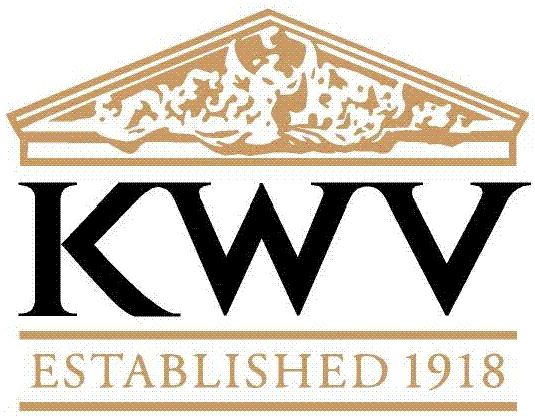One of the most fascinating and complex wine institutions in South Africa is the Ko-operatieve Wijnbouwers Vereniging or KWV. OK, I know they are no longer a cooperative, but that name, in Dutch, is retro-awesome. That last sentence should be read with the required amount of irony by the way. Anyhoo.
It is easy to be prejudiced against the KWV, with its checkered history of monopolies, fake champagne and flavour-adding scandals. Maybe because of this, smaller ‘boutique’ producers (and their fans who are aroused by all things artisinal) tend to view the KWV as the The Man, the big corporate monster making corporate wines, with no sense of art or place. It’s easy to bash the big guys, especially when they offer delicious offerings such as sparkling coffee Pinotage. But these prejudices are dated, and things are changing at KWV. While I will never join the chocco-pino brigade, the wines coming out of the KWV are getting better and better, and with all things wine, things change slowly. Our prejudices, however, sometimes take even longer.
First, a very potted history to set the mood. The KWV was officially formed in 1918 to help give South African grape farmers and wine producers more bargaining power. There was a massive oversupply of wine you see, and by 1918 (according to my sources) 87 million vines were producing around 55 million litres of wine, which was far too much for the market to handle. According to legend, the streets of Stellenbosch were flooded with the unsellable wine. Where were the students, I want to know?
According the KWV’s constitution at the time the organization had two main aims. As to the market, the KWV was
to direct, control and regulate the sale and disposal by its members of their produce, being that of the grape, as shall secure or tend to secure for them a continuously adequate return for such produce.
I love, really really love the phrase, “being that of the grape” in this context. Simultaneously the KWV undertook to dispose of all the surplus wines themselves. The streets of Stellenbosch would no longer be awash with wine.
And so it was. The KWV, with 95% of South African wine farmers joining up, grew in power. In 1924 the government gave the KWV the power to fix, on a yearly basis, prices paid to farmers for their distilling wine. At the same time the KWV set up it’s second major project for getting rid of excess wine: matured brandy. The first was a failed petrol substitute called Natalite made from distilled ethyl alcohol. It failed as it ended up costing more than petrol.
Around this brandy production the KWV built a range of table wines, fortified wines, and liqueur’s. Exports followed – with Britain offering favourable tariffs to high-strength wines produced in the commonwealth – the industry stabilized and KWV became very powerful indeed.
And on things went. Quantity increased, and quality was worked on by big, historic names of the South African wine industry like Dr. Izak Abraham and Dr. Charles Niehaus. As it grew the KWV was given more and more power. They controlled the industry, in reality, the KWV were the industry.
The majority of KWV’s products were made for export, so even today, though the KWV was converted from its co-operative status into KWV Ltd on 2 December 2002, the international market is somewhat more familiar with KWV wines than we are. This has posed KWV in recent years with much needed rebranding and public relations wizardry.
The scandals of of the early 2000’s where it was found that winemakers at KWV were adding illegal flavourants to their Sauvignon Blancs was exactly what KWV did not need. It was like tripping a man with one leg. They needed to rid themselves of the apartheid era stigma, and dodgy winemaking techniques. Desperately.
And so the new KWV, led in part by Australian cellar master Richard Rowe, has been cleaning up both in the cellar and in wine competitions. What interests me is the branding expedition the KWV has set out upon. In the past KWV products were scarce in South Africa – Roodeberg, for example was export only – and as it goes in the world of wine, scarcity seems to be equated with quality. When these products were released in the local market I think the real quality did not match up to this perceived quality.
Today the KWV is focusing on exclusivity with, among other things, their new 1Roodeberg tasting room and art gallery at their HQ in Paarl. It’s a move that will take time to be successful, but as it is being backed up with excellent wines such as the Mentors range and their fortified wines, I reckon it’s a good bet.
The next post will get into these wines and marketing maneuvers in more detail. I’m trying, you see, to keep the lengths of my posts to a more digestible length.

I used to write them off completely, but over the last four years they have seriously impressed me… They were just awarded the following today by Decanter.
South African Chardonnay under £15 Trophy
KWV The Mentors Chardonnay 2012
Elgin, South Africa
South African Red Bordeaux Varietal under £15 Trophy
KWV The Mentors Cabernet Franc 2010
Coastal Region, South Africa
South African Sauvignon Blanc under £15 Trophy
KWV Cathedral Cellar Sauvignon Blanc 2012
Western Cape, South Africa
Exactly. The next post goes into all of that. Next week, god willing. Sorry, harry willing.